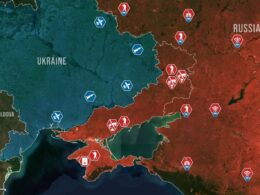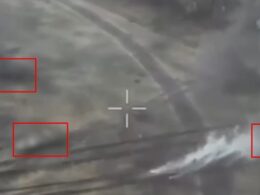Day 1019
On 8 December, there are a lot of updates from the Kursk direction.
Here, as Russian forces struggle to sustain the pace and intensity of their offensive, they have turned to North Korean heavy equipment to bolster their efforts. Meanwhile, Ukrainian forces, leveraging intercepted communications, launched successful precision strikes on key Russian bases, dealing a significant blow to the reported deployed North Korean reinforcements and halting the offensive momentum.

The Russian offensive in Nizhny Klin has persisted with high-intensity attacks despite repeated failures to make significant progress. Their primary objective remains to advance along the main highway and secure control of the village. Capturing Nizhny Klin would grant Russian forces a tactically advantageous forested area, providing cover for the buildup of troops and equipment aimed at collapsing the Kursk salient.
The village's elevated position also offers a strategic edge, enabling fire control over Ukrainian positions to the east. This would place Ukrainian defenders in Sverdlikovo, situated in a vulnerable low river valley, at a significant tactical disadvantage.

Recognizing the strategic importance of Nizhny Klin, Russian generals have redirected their focus, scaling back offensive efforts elsewhere in the Kursk direction to concentrate their assault units on capturing the village at all costs. The command appears willing to incur massive losses through relentless "meat-wave" attacks in pursuit of this objective.
Ukrainian forces, fully aware of Nizhny Klin's value and tactical elevation, heavily mined the fields leading to the village to stall advancing Russian troops. These fields, located in lowlands, forced Russian forces to traverse exposed terrain, allowing Ukrainian defenders to establish effective fire control over the key Russian attack routes. Moreover, Ukrainians still hold the tactically advantageous positions of Nizhny Klin, making it easier to repel the Russian attacks.
Combat footage from the area shows a sizable Russian mechanized assault formation comprising six T-72B3 tanks and BMD-2 armored vehicles carrying airborne stormtroopers. To shield their troops from Ukrainian artillery and drones, the Russian command relied heavily on these armored vehicles, which ultimately became death traps. Nearly all vehicles were obliterated by landmines, with secondary explosions from onboard ammunition reducing the wreckage to debris. Ukrainian drone operators then targeted the surviving Russian troops who, in a desperate attempt to retreat, were eliminated while fleeing the carnage.

The worsening shortage of Russian heavy equipment, compounded by mounting losses in the latest wave of attacks, has forced the Russian command to rely on North Korean reinforcements in the Kursk Oblast. To offset these equipment gaps and bolster assault preparations, North Korea began transporting heavy equipment to the front via rail, including the Koksan self-propelled howitzers intended to provide artillery support for upcoming attacks. Reports suggest that alongside the fifty Koksan howitzers, North Koreans may also deploy tanks to further strengthen Russian operations in the area.

Intercepted radio communications between North Korean officers in the area gave Ukrainian Military Intelligence critical insights into their operations. The initial exchanges revealed that North Koreans were in a hurry. Further interceptions gave enough information to identify the training ground where this exchange happened, enabling Ukrainian HIMARS operators to adjust their targeting.

As a result, a precision strike was conducted on a North Korean force concentration at the base of the Russian 83rd Airborne Brigade, eliminating a significant force concentration and indefinitely halting their plans. The presence of North Koreans at a Russian Airborne base aligns with our previous report of Russian efforts to integrate North Korean forces into the VDV structure through the formation of so-called fake Buriat Battalions.
Overall, the Russian military's growing desperation to sustain its stalled offensive near Nizhny Klin is highlighted by its reliance on North Korean equipment and personnel. This dependency underscores the depletion of Russian resources and exposes the logistical and operational vulnerabilities of integrating foreign forces into an already strained system.
Ukraine's precision strikes, informed by real-time intelligence, neutralized this new threat and demonstrated their ability to preempt and disrupt Russian plans effectively. These developments significantly weaken Russia's broader offensive capabilities, leaving its strategy increasingly fragmented and vulnerable to Ukrainian countermeasures.
In our daily frontline report, we pair up with the military blogger Reporting from Ukraine to keep you informed about what is happening on the battlefield in the Russo-Ukrainian war.
Read also:
- Frontline report: Ukraine destroys Russian S-400 shield to target North Korean training camps in Kursk
- Frontline report: Two Ukrainian Marines repel massed Russian infantry assault in Kursk Oblast





